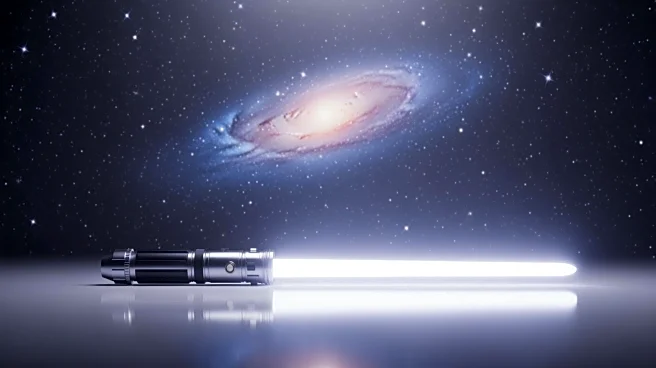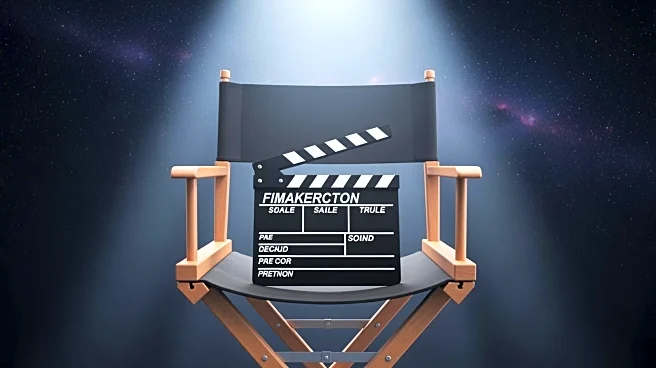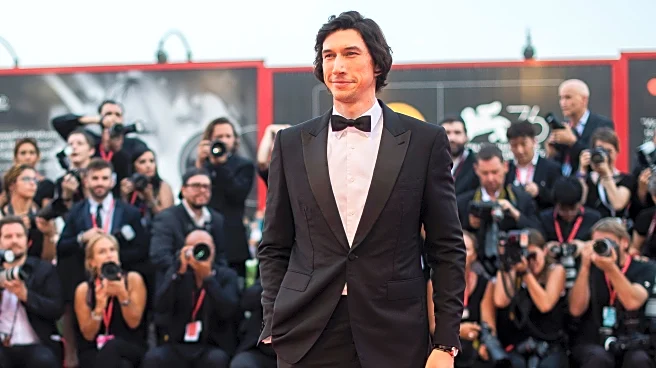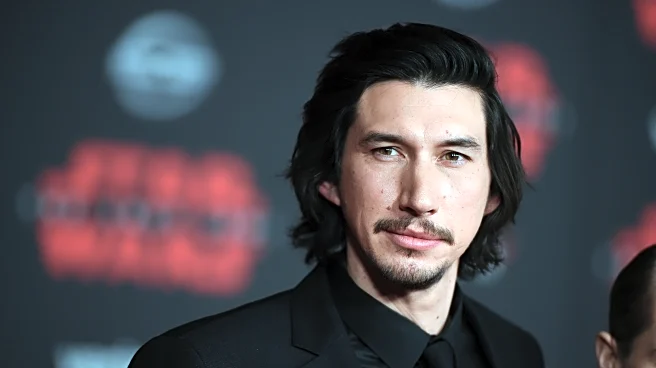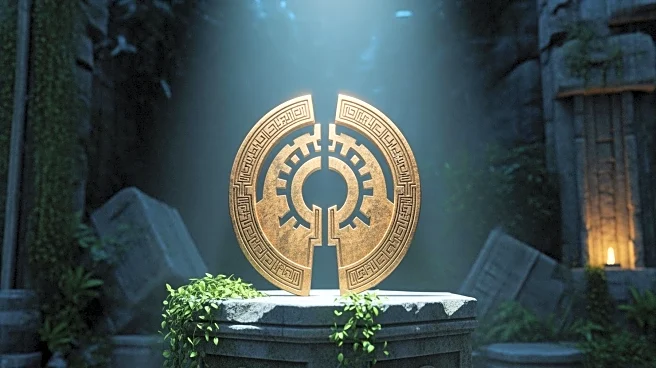What's Happening?
Adam Driver, known for his role as Kylo Ren in the Star Wars franchise, revealed that he had collaborated with director Steven Soderbergh on a project titled 'The Hunt for Ben Solo.' The film was intended
to explore the character of Kylo Ren after the events of 'The Rise of Skywalker.' Despite initial interest from Lucasfilm executives, the proposal was ultimately rejected by Disney executives Bob Iger and Alan Bergman. The script, written by Scott Z. Burns, was described by Driver as one of the coolest he had ever been involved with. The project aimed to be more economical than typical Star Wars films, focusing on a character-driven narrative akin to 'Empire Strikes Back.'
Why It's Important?
The rejection of 'The Hunt for Ben Solo' highlights the challenges faced by filmmakers in expanding established franchises. Disney's decision reflects the complexities of maintaining continuity within the Star Wars universe, especially when dealing with characters whose story arcs have concluded. This decision impacts fans who were eager for further exploration of Kylo Ren's character, as well as the creative team involved. It underscores the influence of corporate decision-making in the entertainment industry, where financial considerations and brand integrity often dictate the direction of major franchises.
What's Next?
While the project has been shelved, the revelation opens discussions about the future of Star Wars storytelling. Fans and creators may continue to advocate for new narratives that explore beloved characters in innovative ways. The decision may also prompt Disney and Lucasfilm to reassess their approach to expanding the Star Wars universe, potentially leading to new projects that balance creative ambition with franchise continuity. The involvement of high-profile directors like Steven Soderbergh suggests that there is interest in diversifying the storytelling within the Star Wars franchise.
Beyond the Headlines
The rejection of the Kylo Ren project raises questions about the balance between artistic vision and commercial viability in Hollywood. It highlights the tension between creative storytelling and the constraints imposed by franchise continuity. The decision also reflects broader industry trends where major studios prioritize projects that align with established narratives and financial expectations. This scenario exemplifies the challenges faced by filmmakers in pushing creative boundaries within iconic franchises.



